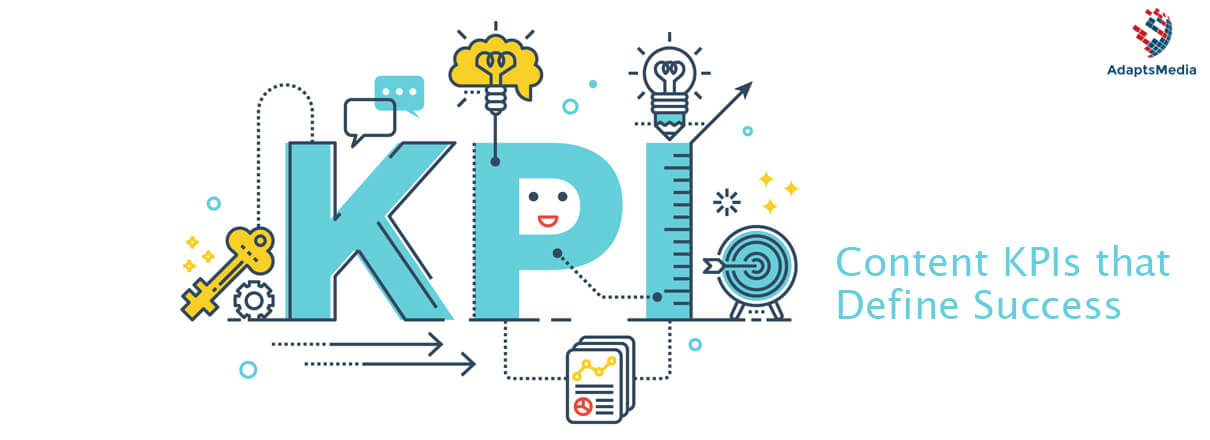Content marketing is necessary to boost your SEO endeavors. Measuring the effectiveness of your content through Key Performance Indicators (KPIs) is, therefore, integral in content marketing. The KPIs are in the form of metrics that evaluate the performance of a specific content over a certain period.
Understanding KPIs
There are tons of KPIs that one can use to evaluate performance. But using so many metrics can prove to be confusing and will inhibit positive improvisation. That is why considering the time-tested KPIs prove to be more useful.
So how can one differentiate a substantial metric from a KPI? There is a simple test that you can conduct on your own. Choose any indicator, and try to double the value of that indicator in your mind. Do you think doubling the value of that indicator will improve your business’s performance significantly? If so, then it is an efficient KPI. If not, then you are just dealing with a substantial metric.
But to help you get started on content marketing, we will help you get acquainted with some of the best content KPIs that define a successful content marketing strategy.
The Best Content Key Performance Indicators (KPIs)
There are different types of KPIs dealing with different aspects of performance. To get an overview of how your business is doing, you need to integrate the findings from all these KPIs to make informed business decisions.
Awareness KPIs:
Awareness KPIs include metrics that measure how successful your business is when it comes to grabbing the attention of a customer who could need your services.
Here are a few awareness KPIs that you should be aware of:
1.) Search Volume Data
Search Volume Data is one of the most effective KPIs for measuring brand awareness. It indicates the number of people that are looking for solutions that revolve around your business, industry, and the keywords that you are using. It will also indicate how many people are talking about your company, if any at all.
Measuring search volume data is a simple process. You can do so with the help of a variety of online keyword research tools like:
- Google Keyword Planner
- SEMrush
- Google Trends
2.) Organic Search Impressions:
Impressions are an indication of the number of people who have come across your content. Paired with another KPI such as Click-Through-Rates, impressions can reveal a lot about the success of your content campaigning. Click-Through-Rates reveal how many people clicked on your content upon encountering it.
You can measure Organic Search Impressions through tools like Google Search Console.
3.) New Users:
It is crucial to keep track of how many new users are visiting your website after a specific period. While you should always cater to the needs of your loyal customers, new customers are just as important as they ensure that your business keeps growing.
The ‘New Users’ KPI indicates how many people are visiting your website for the first time. It is a great way to keep track of the content that is driving new customers. Using Google Analytics is a good way to keep track of new users.
4.) Share of Voice
Share of Voice (SoV) is an important metric that you should use to determine your success relative to that of your competitors.
Share of Voice is a term that people are using since the start of the digital revolution, even before content marketing rose into prominence. In the traditional setting, people used SoV to measure their business’s advertising compared to all the other businesses in the same niche. Nowadays, SoV uses several content-awareness KPIs to determine the success of a website’s marketing strategy.
In the simplest terms, SoV will show the percentage share of your website on the Search Engine Results Page (SERP) based on a select few keywords that you choose. For example, if Google shows your content 500 of 1000 times when people search for a specific keyword, your SoV would be 50%.
User Engagement KPIs
User engagement is the next category that determines the success of a business. User engagement KPIs indicate whether or not people are interested in the services that you are offering.
1.) Clicks:
The number of clicks that you receive from internet surfers is the simplest indication of the engagement stage of the funnel. At the very least, clicks would ensure that you are not getting the title wrong. Google Analytics can help you track how well you are doing when it comes to clicks on your content.
You can track clicks in many ways:
- You can measure the number of clicks that your content is receiving through SERP.
- You can also keep an eye on the number of clicks that you receive through your advertisements on different social media platforms.
- External links on off-page platforms can also bring a significant amount of clicks your way.
2.) Time Spent on Page:
Time spent on a page determines the amount of time a customer is willing to invest in your business. It is a clear indication of whether or not your services are attractive enough for your customers.
This is a good metric to measure the attractiveness of your content. For example, suppose you have an article that contains around 1000 words and has a reading time of 5 minutes. But the customer only spends 10 seconds on your website. This highlights that the customer wasn’t interested in your solutions.
3.) Average Session Duration:
Average session duration is the macro version of time spent on-page. A session describes the user interactions that take place on a website. Thus, the average session duration is different from time spent on the page as it points out all the activity that takes place on your website’s page instead of just tracking the time that a visitor spends on your web pages.
Average session duration is a good KPI when your website is interactive and has a lot of linked pages.
4.) Bounce Rate
Another important KPI that you can track through Google Analytics is the bounce rate. It indicates the number of users who ‘bounce’ or leave your website right after they enter without interacting at all.
Bounce rate is necessary to filter out accidental clicks from your original reports. If the bounce rate is higher, you can conclude that the customers were disappointed by what they found on the webpage.
5.) Page Depth:
Page depth or ‘scroll depth’ analyzes the number of scrolls that users make while on your website. This is an important KPI as scrolls are rarely accidental, unlike clicks and other such actions.
Google Analytics is the safest and the most reliable option to measure scroll depth.
Conversion KPIs
Some people might consider these the most important KPIs as they measure the value of your content.
1.) Conversion Rate:
Conversion rate tracks the number of goals that your business completes after a specific interval of time. These goals can be anything – from filling a form on your website to making an order.
Conversation rate is important to track the feasibility of your company’s goals and objectives.
2.) Order Value:
Average order value tracks the average amount of money that a customer spends on your website every time they order or purchase your services. Google Analytics will help you get a glimpse of the average order value that your business has.
3.) Customer Retention:
As we mentioned earlier, keeping loyal customers happy is integral to build a successful business. Customer retention tracks how long your website can keep its paying customers satisfied enough so that they keep returning to avail new services.
4.) Return Users and Repeat Business:
Return users is a KPI that tracks the number of people who come back to your website after an initial visit. This is a good indication of whether or not the content you are pushing out is helping solve people’s needs.
Repeat business is another KPI that is even better for your business. It keeps track of the people who engage in business with your company on a routine basis.
Start Marketing!
Earlier, running an online business was shot in the dark, and you had to make blind choices to hopefully improve your performance. The arrival of KPIs changed the entire outlook of content marketing. Now, people can make use of these educational analytics to gauge their business’s well-being and also fix issues or ‘leaks’ that were otherwise left unaddressed. The KPIs that we have mentioned in this blog will give you a good idea of how to measure your content marketing success.
Don’t miss out on the opportunity to gain a competitive edge. Contact our team for expert assistance.

